Continued from part 2…
Many things planned for today, we had breakfast in our room (Helen bought us some cereal and milk last night so we didn’t have to spend another extortionate amount for a hotel breakfast), then got on the road South towards Portsmouth.
We parked up in Gunwharf Quays, a shopping centre similar to Liverpool One, and Helen settled down at a coffee shop, while I went on my own adventure. I walked around to the harbour station pier, took a ferry across the harbour to Gosport, and walked to the Royal Navy Submarine Museum. Helen chose not to go in case the submarine was pressurized and might be migraine inducing for her.
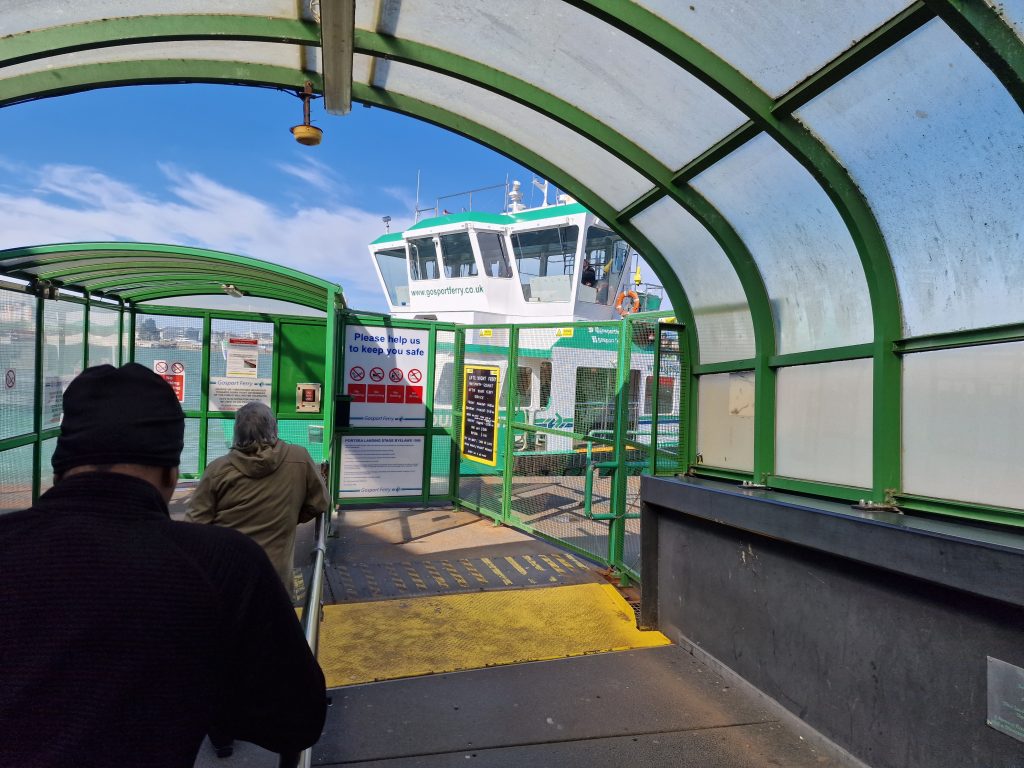


It was extremely windy, especially walking over Haslar Bridge. The whole way to the submarine museum, I was walking against the strong winds, which made it feel far more difficult than it needed to be! Nevertheless, I reached the museum shortly after 11am, ready to explore the HMS Alliance.
The submarine museum is on an old naval base that would’ve been swimming (pun intended) with seamen during WWII. Several old pictures in the museum showed the dock area filled with dozens of submarines, which is now host to hundreds (maybe thousands) of smaller boats and yachts.
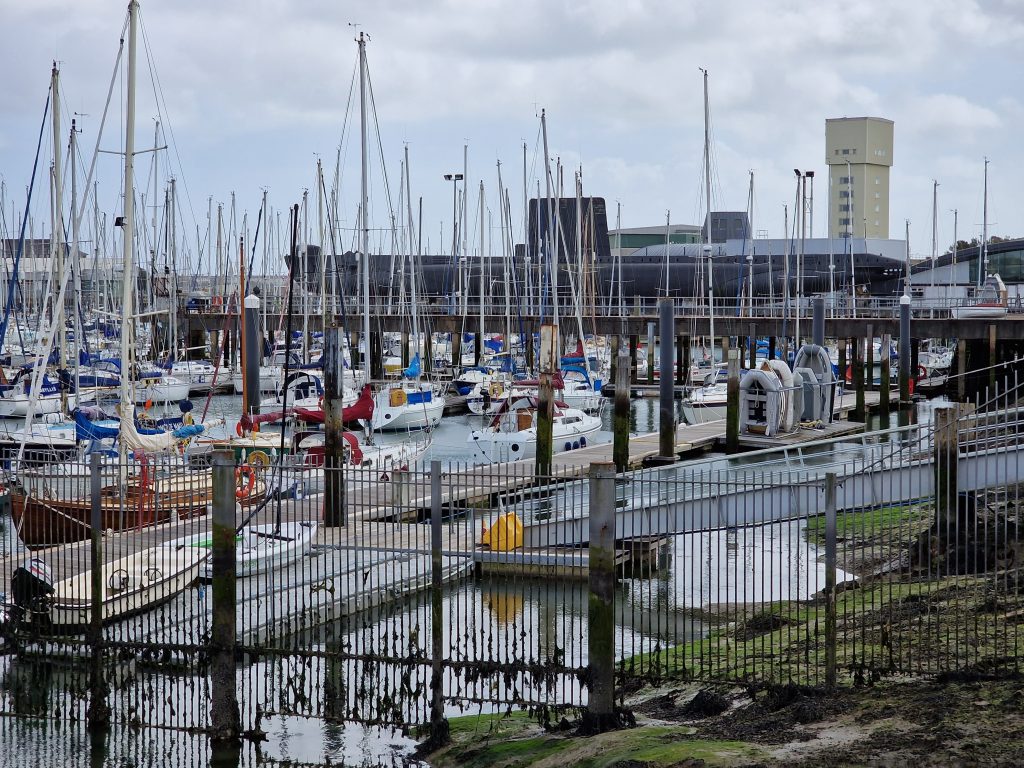
On boarding the sub, the first room you enter is the torpedo room at the front, with four torpedo tubes facing forwards. One torpedo was left out of the tubes on the side, and it was already a fairly compact space. The tour guide said that there would normally be about ten torpedoes in this little room, and people would sleep on them! Must’ve been very cramped!
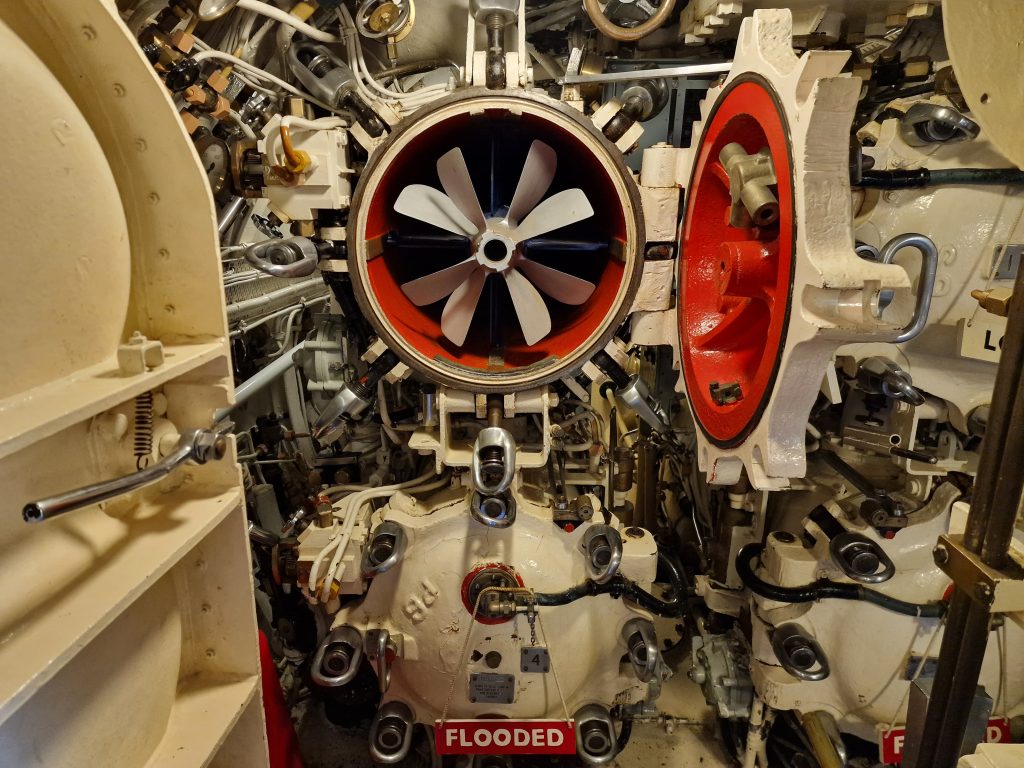
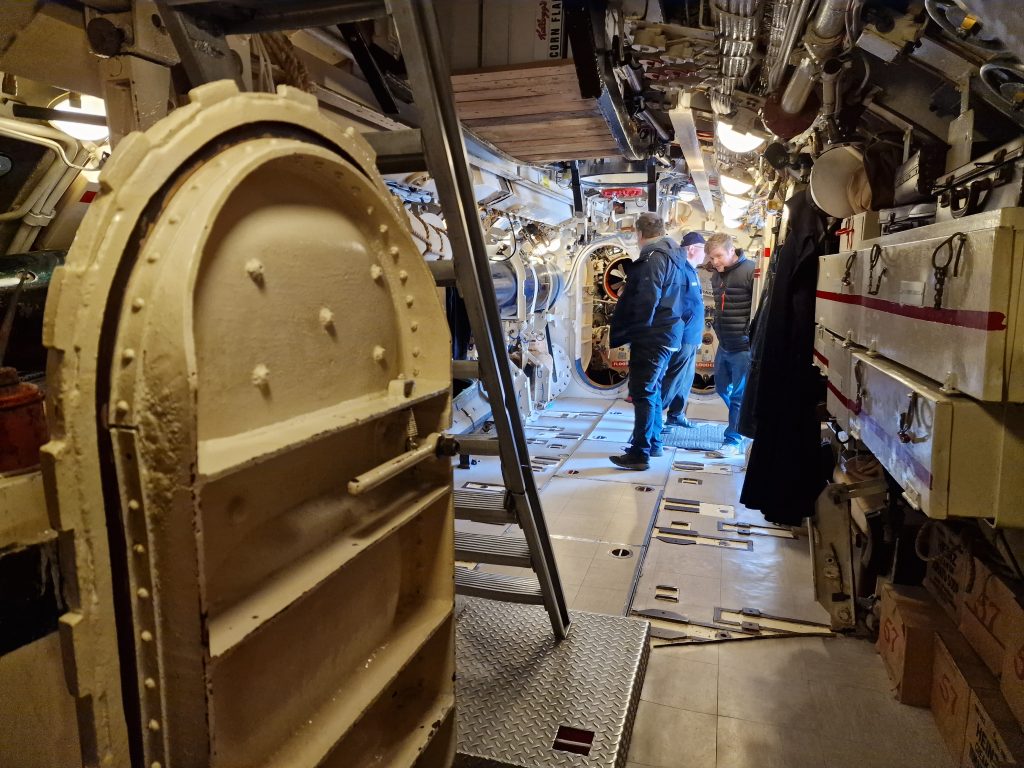
Airlocks were short and slim, but I managed to squeeze through them. There were various officer and crew messes along the corridor with beds lining the other side, all leading up to the main room – the bridge.
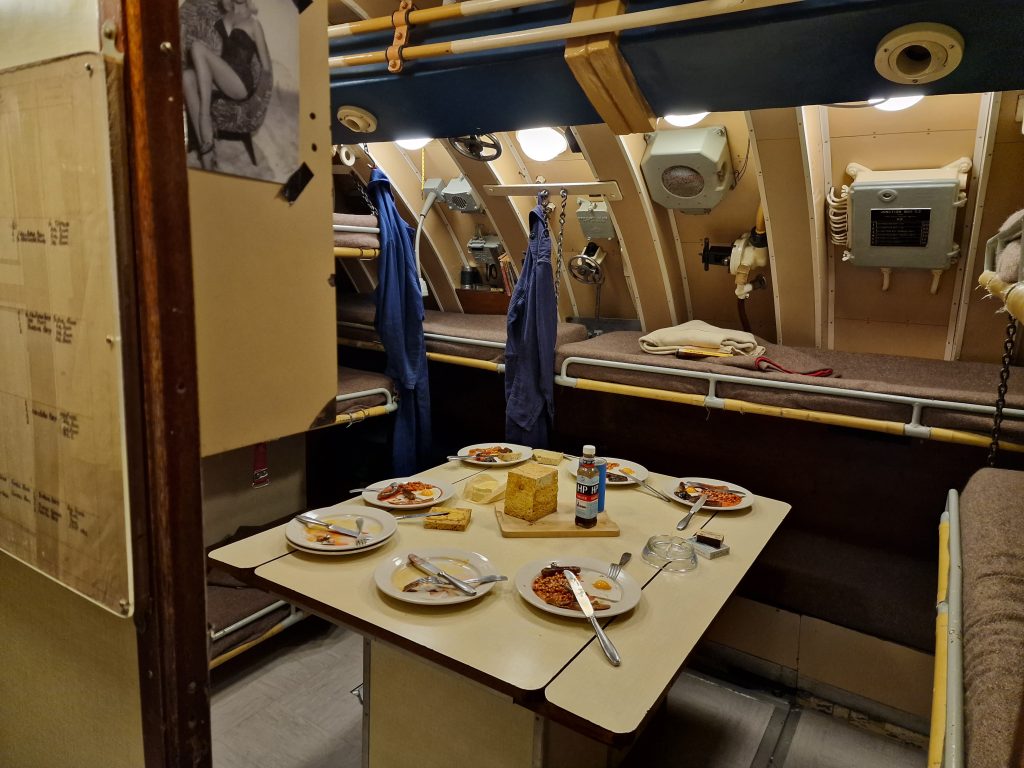
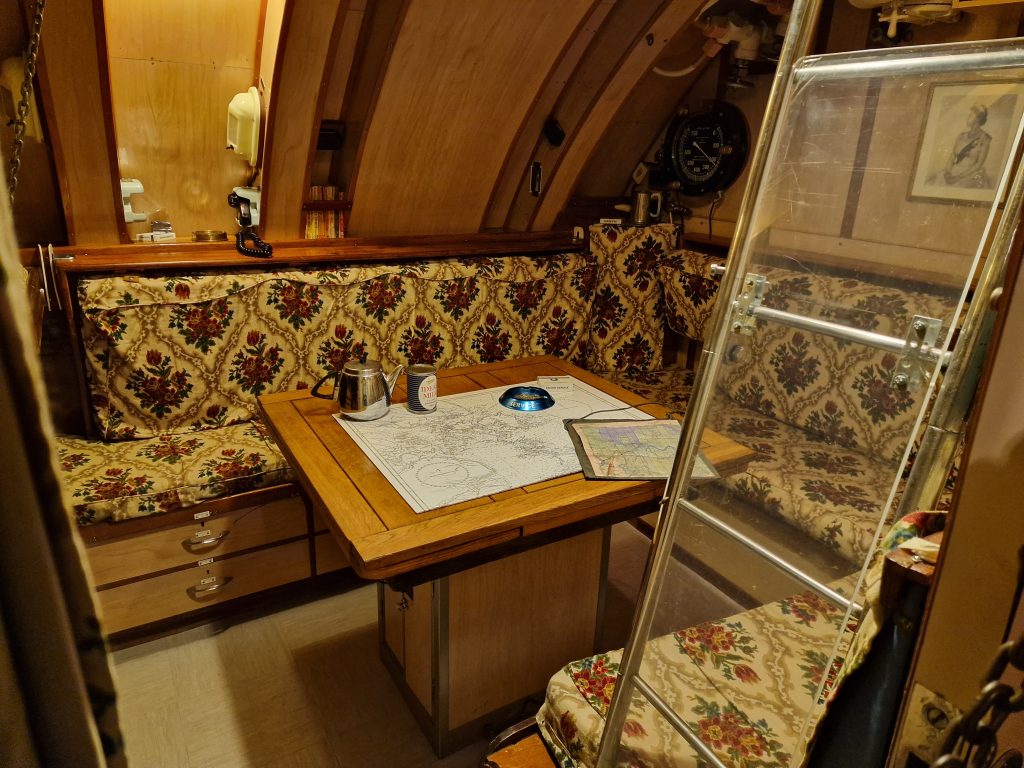
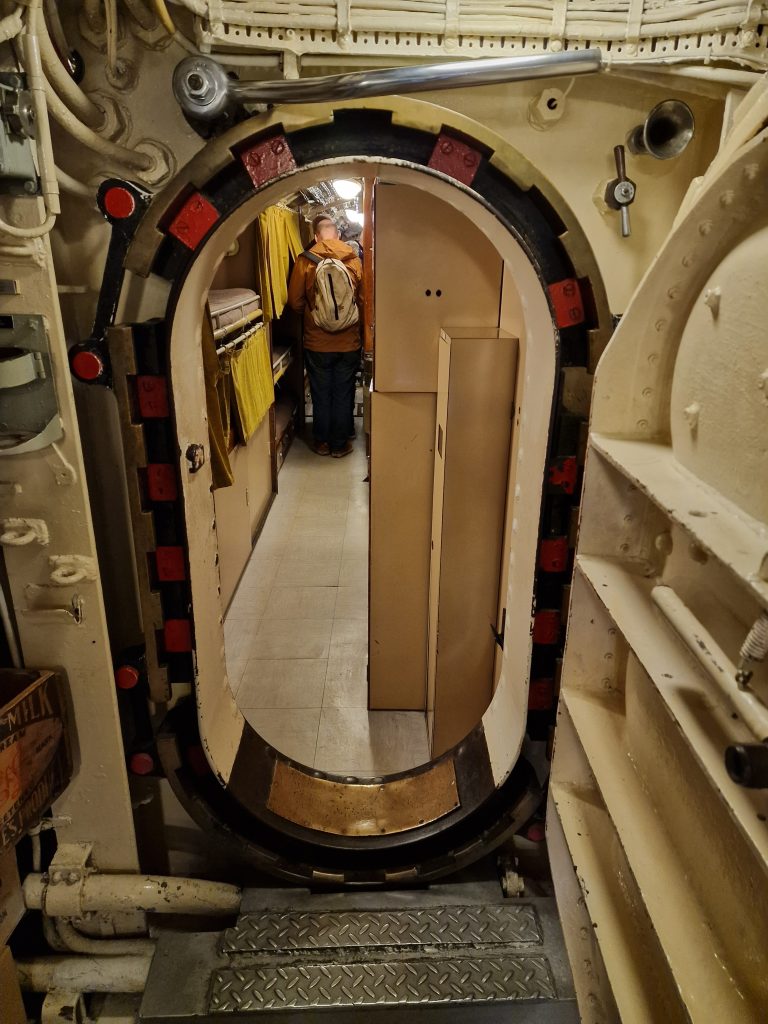
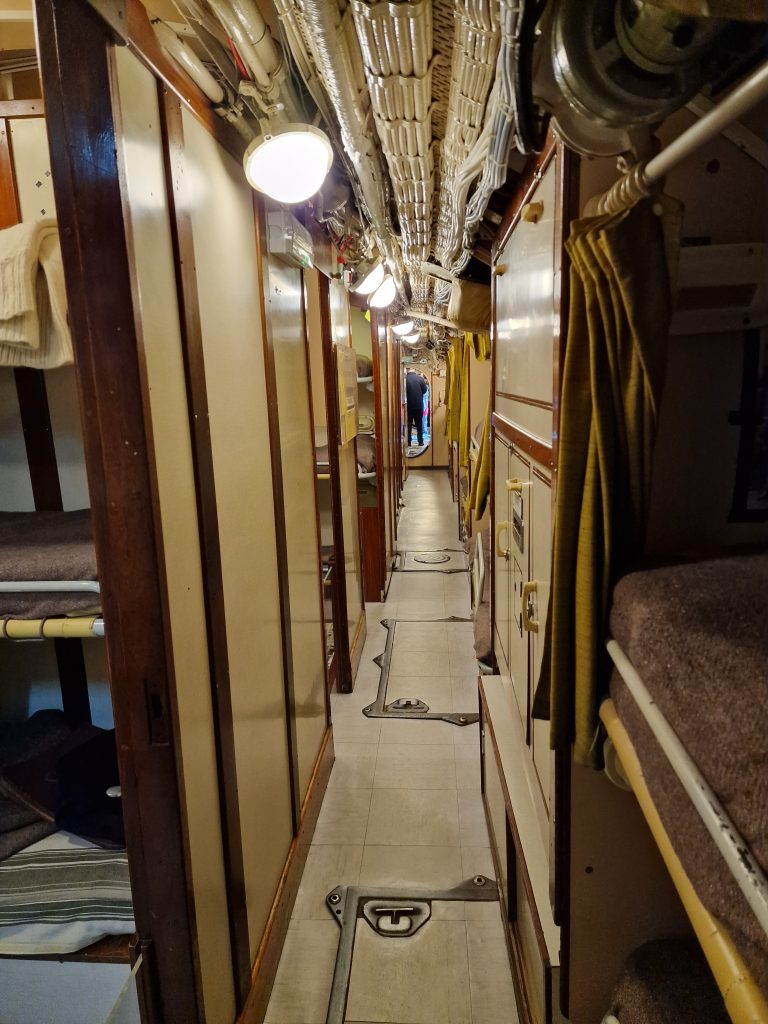
The bridge was again very tight, but we were told about which station did what, why there were two periscopes instead of just one, various nicknames for the controls (like fat periscope, thin periscope, jukebox, and a couple more I’ve forgotten).
The fat periscope was set up to look at Spinnaker Tower, which is where Helen was at the time, but I couldn’t quite make her out unfortunately. It wasn’t that high-definition.


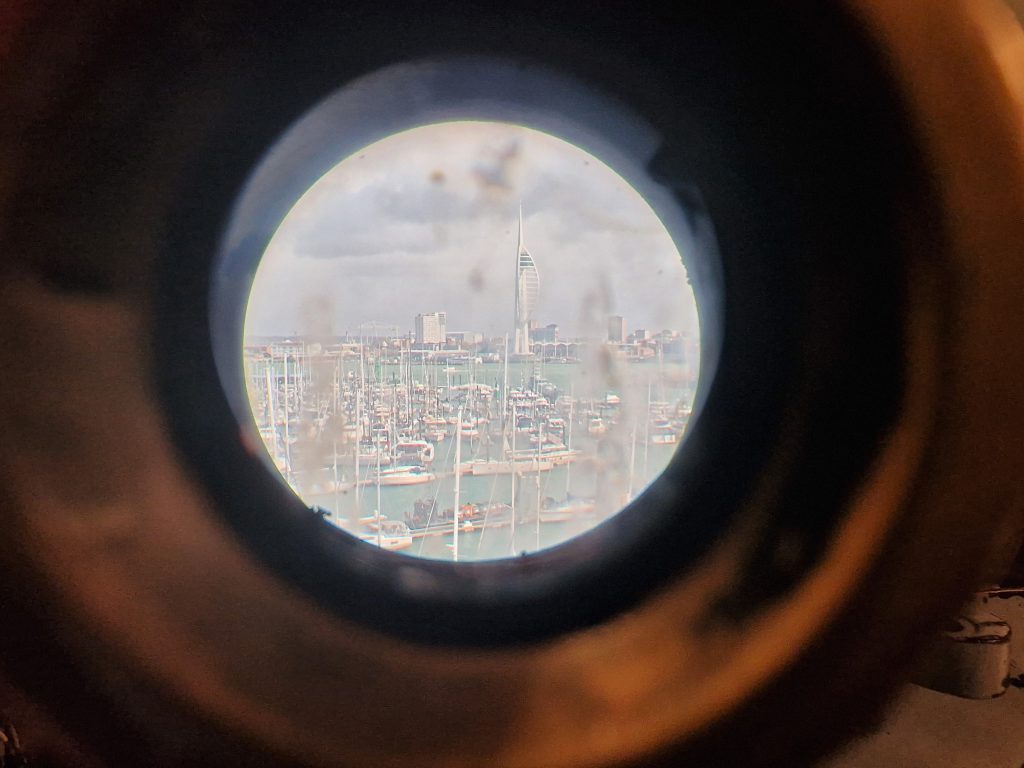
Past the bridge was the radio station.
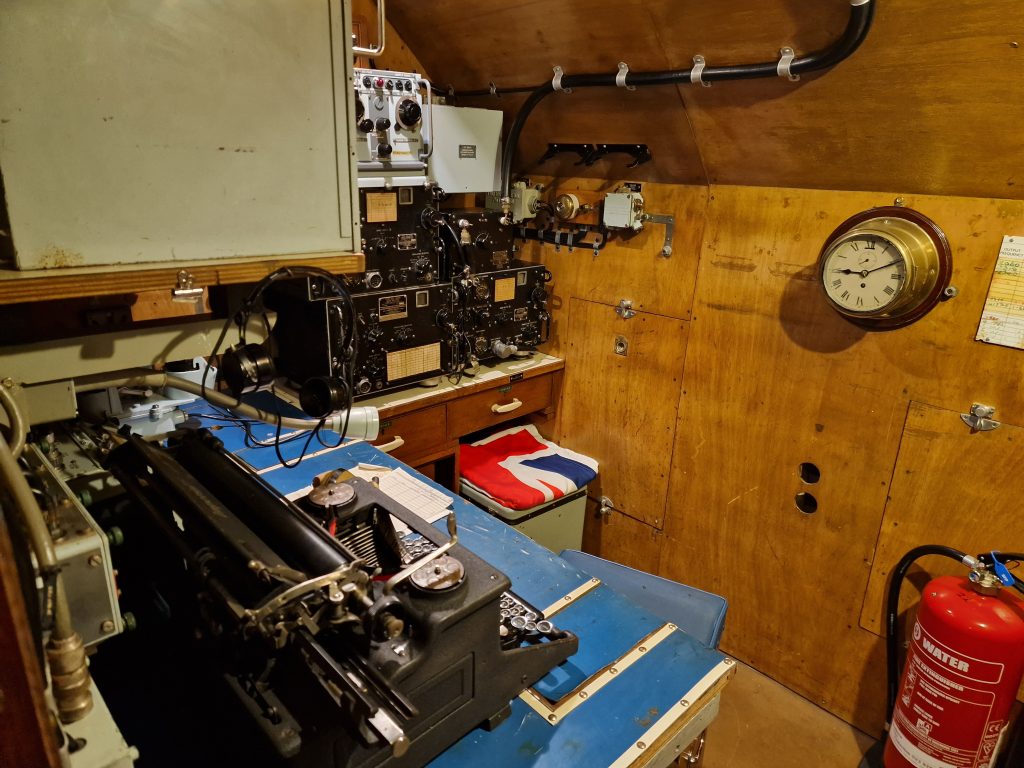
Then the engine room.
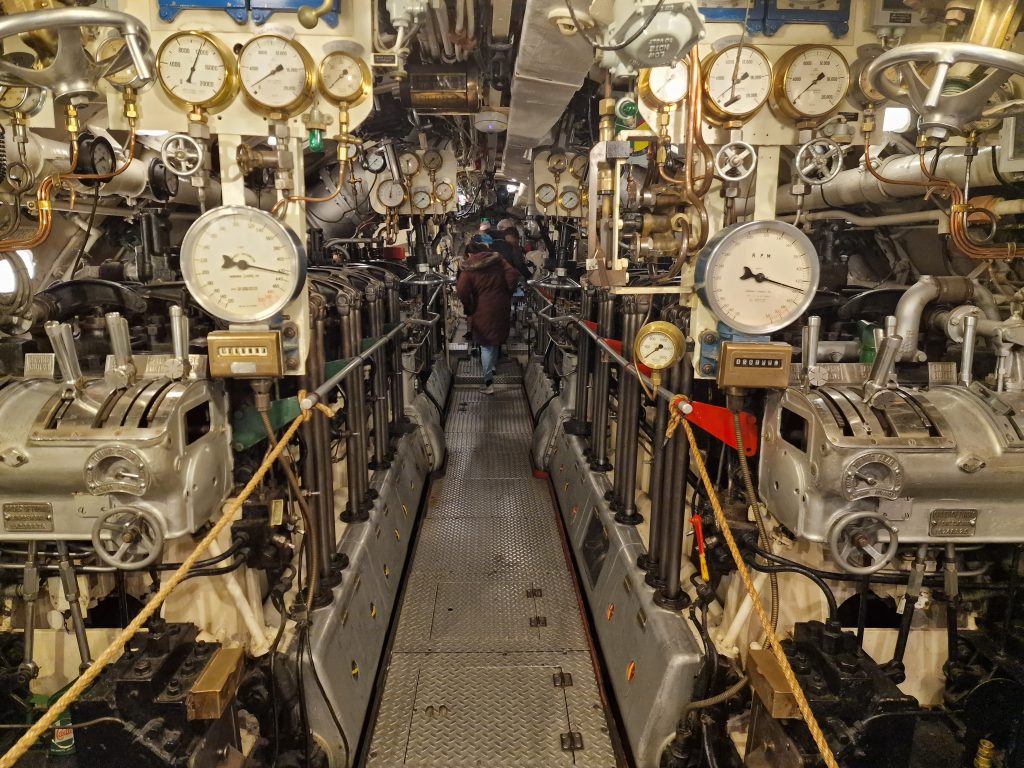
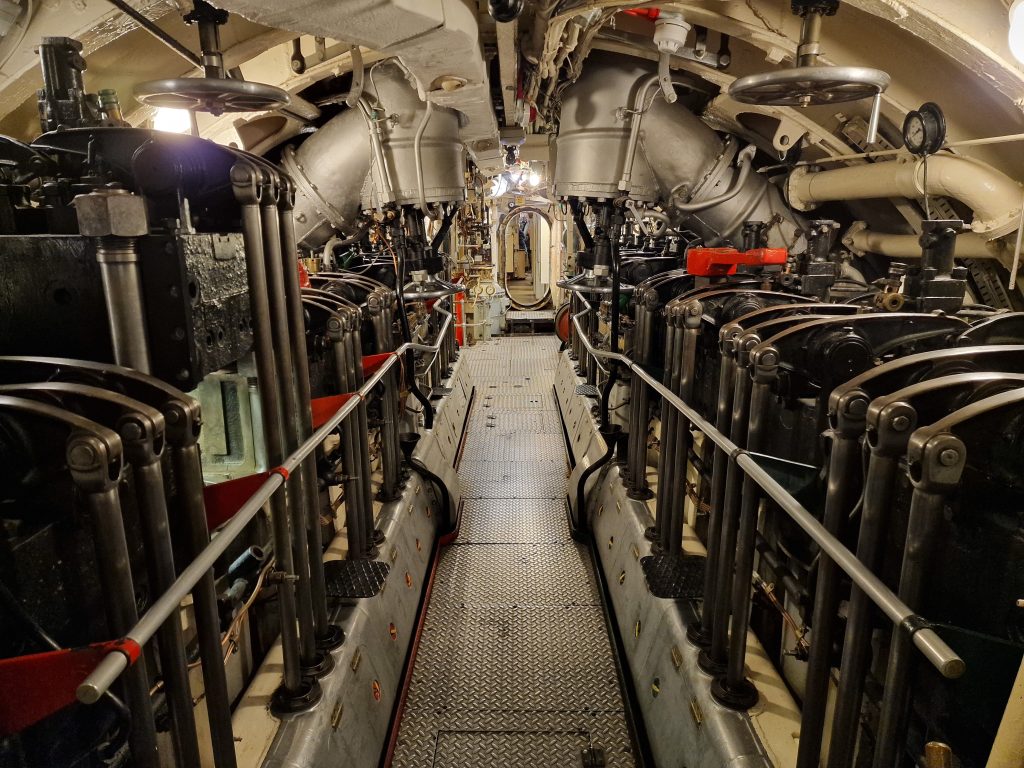

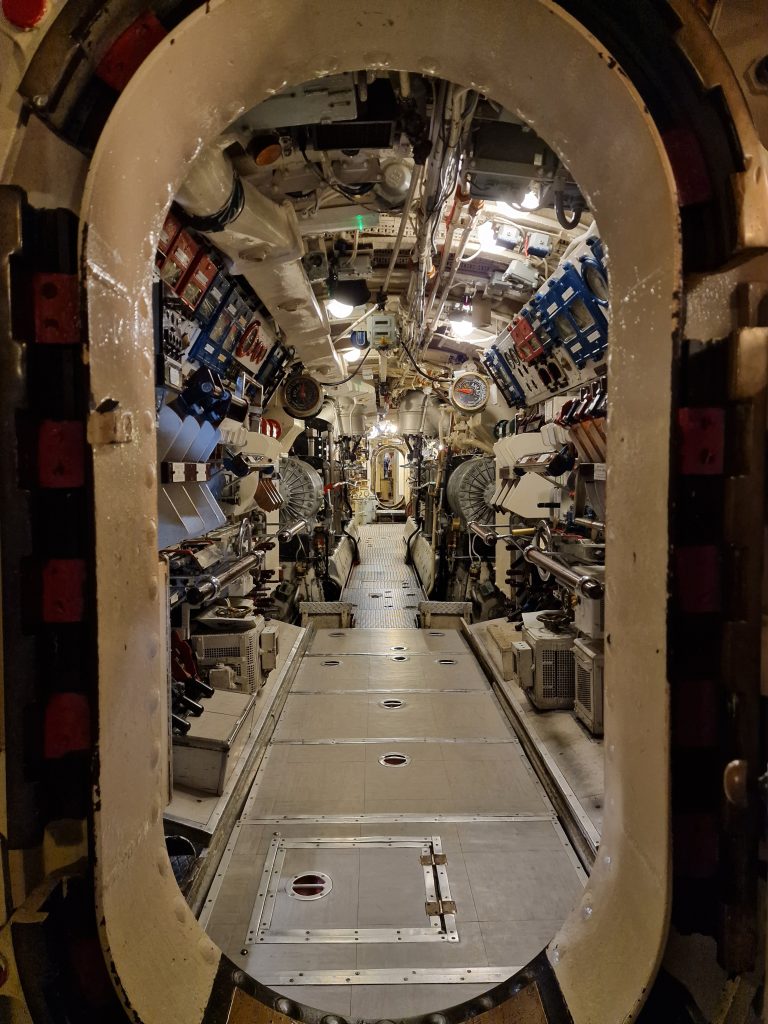
And finally the rear torpedo room, where a torpedo had been cut in half to show its cross-section.
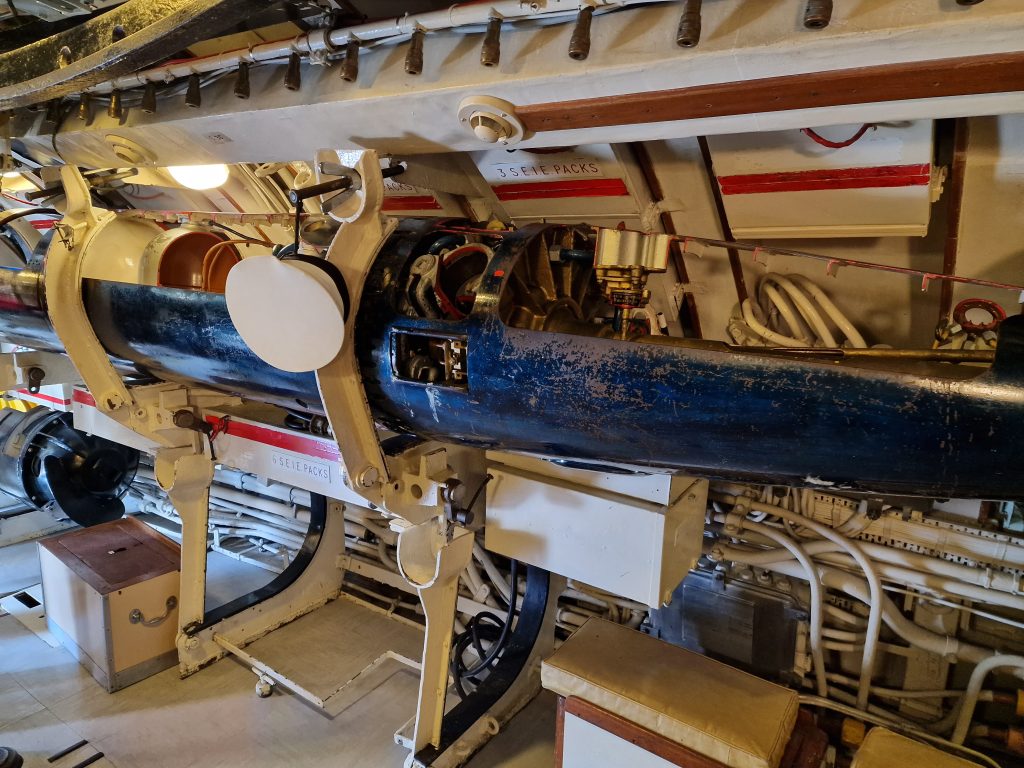
It was difficult to get a picture of the whole sub because of where it’s situated, and the fact that there’s an elevator shaft in front of it for accessibility, but I did my best.

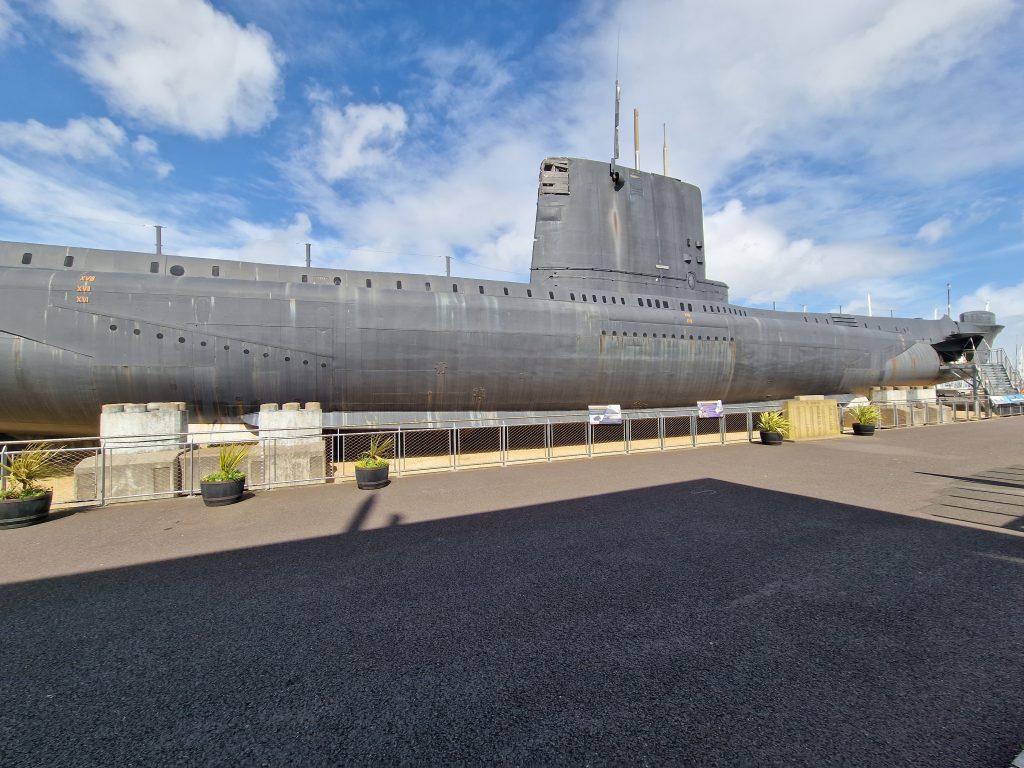
The attached museum was nice and spacious in stark contrast to the HMS Alliance, with a seating area, small gift shop, etc. I found the most interesting thing there was a “midget submarine”, the X23. This thing is tiny, nowhere near enough space for someone to stand up, and yet it was crewed by four people! They’re not much larger than a modern ICBM!
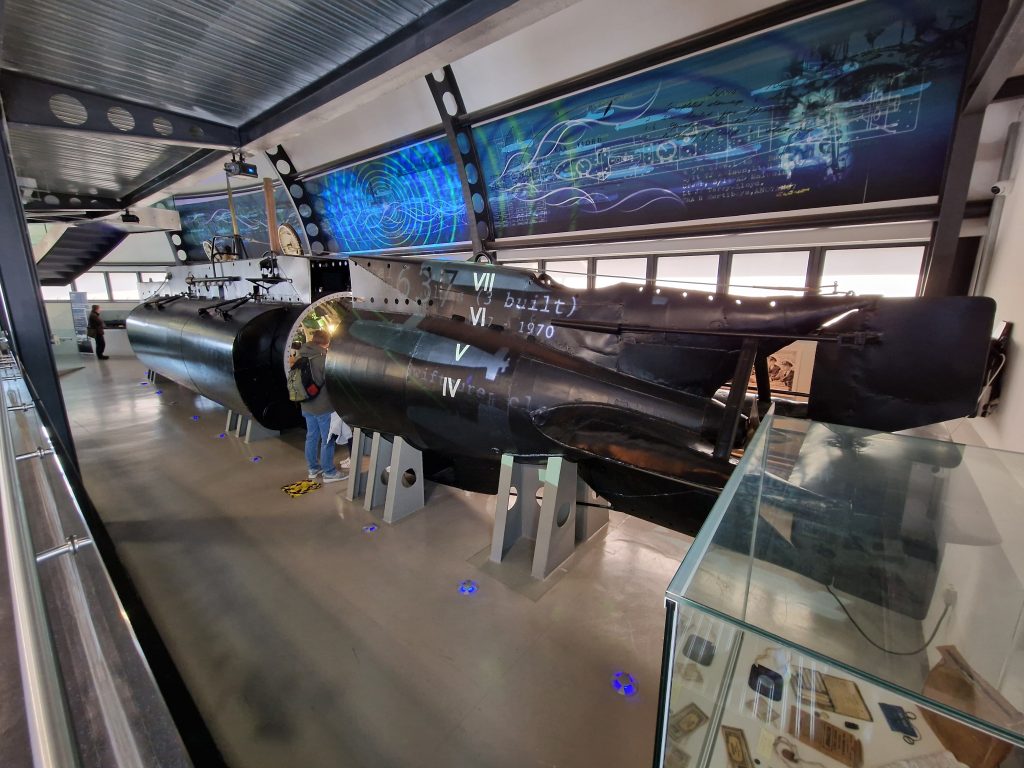
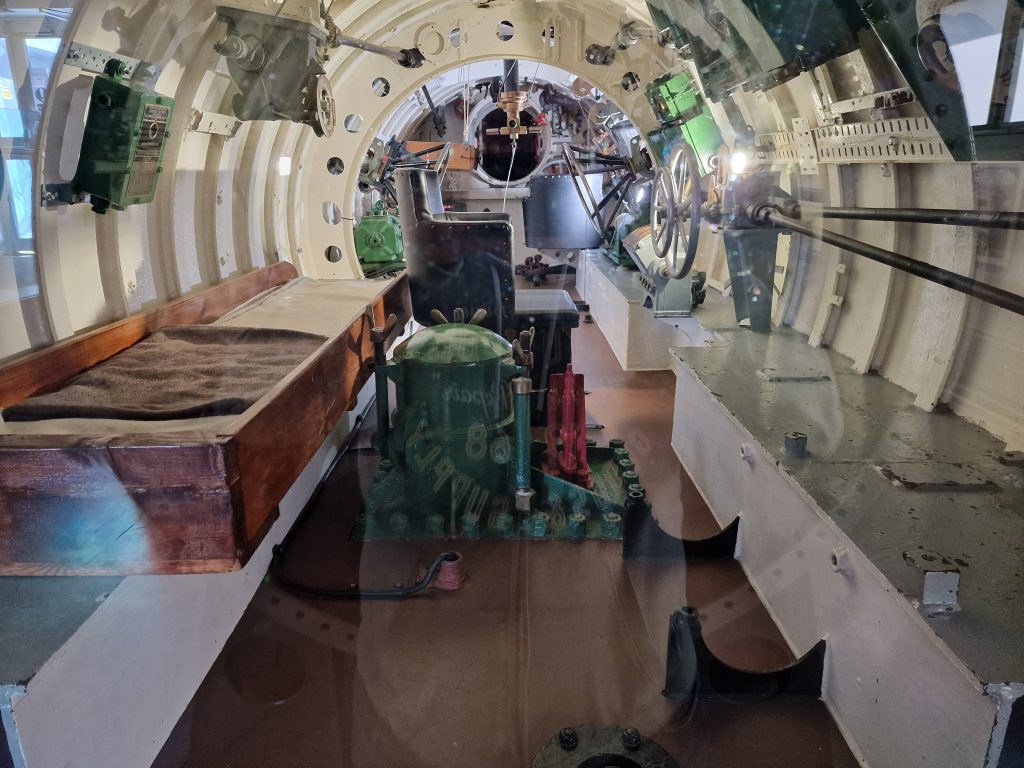
After a biscuit and a drink in the museum, I set off on the windy walk back towards Gosport ferry dock. As I got close I saw the ferry docking so ran the last few hundred metres, but it turned out I didn’t need to since around fifty people were queueing to get aboard. A very busy little ferry!
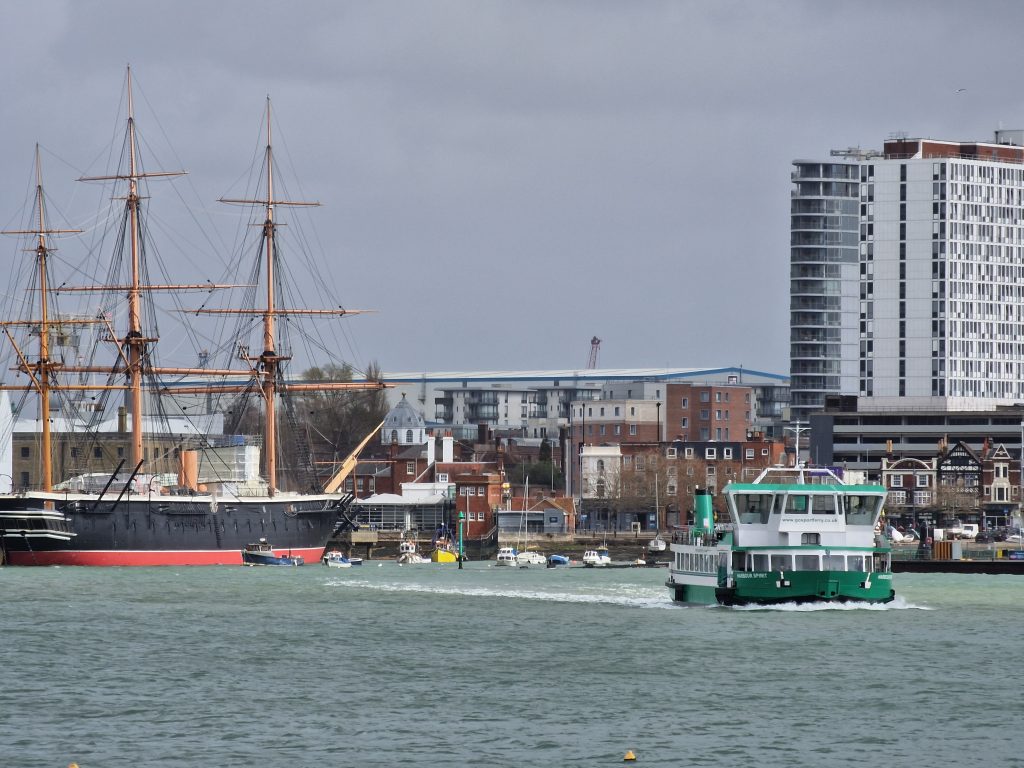
Back on the Portsmouth side I met back up with Helen in a cafe, and we went for some lunch at the Alchemist. We both fancied a steak baguette, but what we got didn’t contain all that much meat. Oh well!
One baguette later we walked from Gunwharf Quays to the historic dockyard, and just after paying to get in the heavens opened. First with torrential rain, then a hailstorm, then more rain. We got soaked through! Pet peeve: people who stand in doorways to keep dry who you then have to push past to get inside out of the rain!
Thoroughly wet, we made it to the HMS Victory, Lord Admiral Nelson’s flagship from the mid-18th century. Unfortunately for us, it’s currently under renovations, so it’s entirely covered by a large white tent. But what that did mean though was that walking around the upper deck was pretty dry, while we listened to the rain and/or hail pelting the tent from the outside.
Here are the best shots I could get of the ship’s exterior!
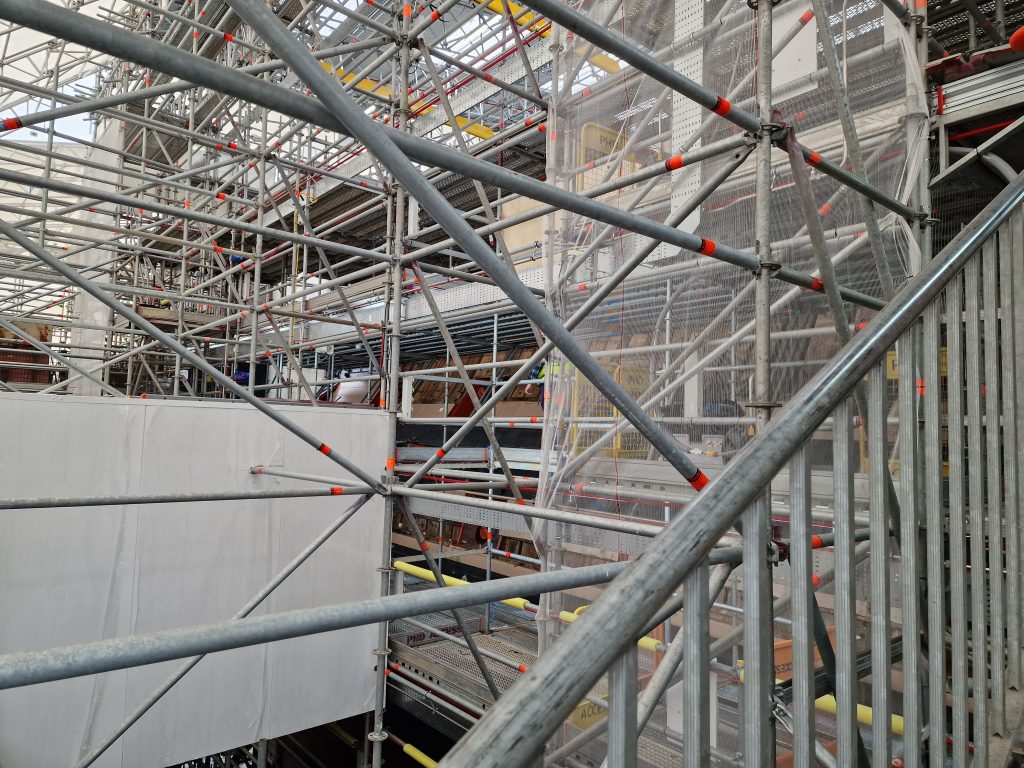
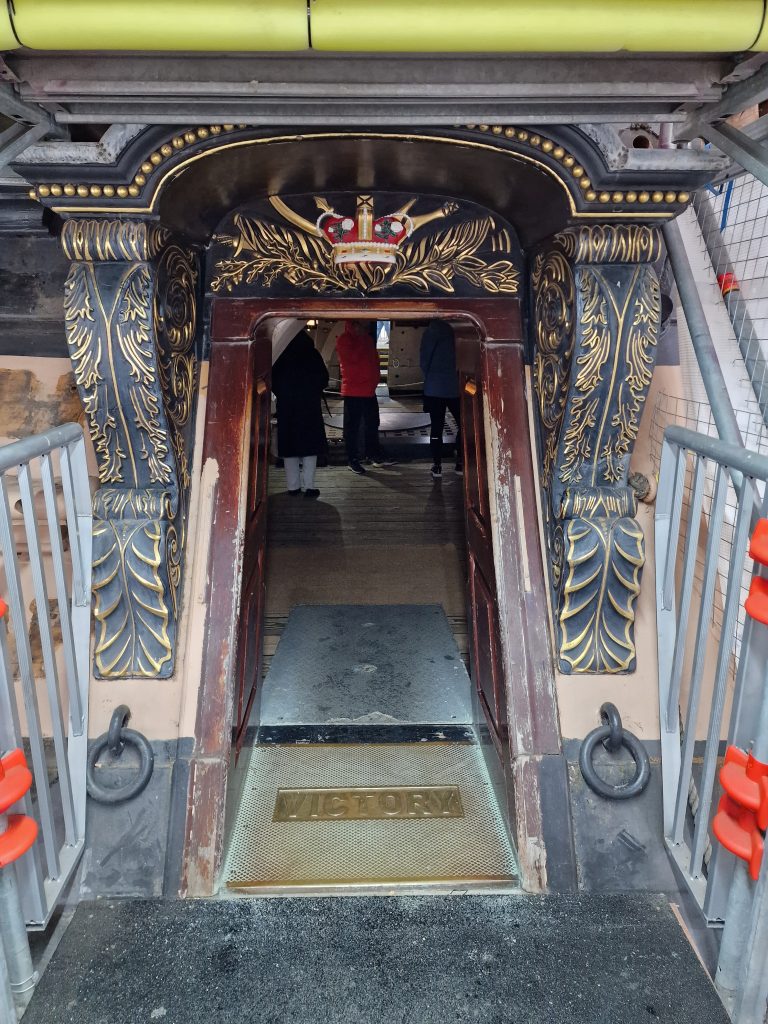
The interior was more spacious width-wise than the submarine I’d just visited, but the decks were much shorter. Even Helen had to duck to walk around a couple of the decks!
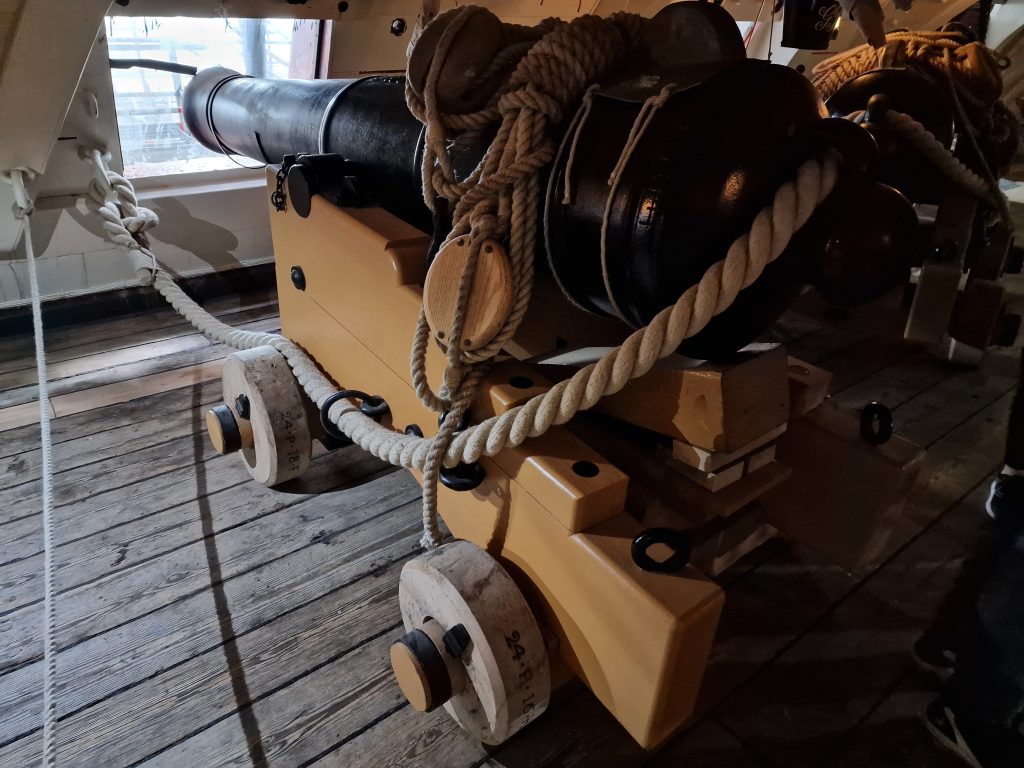
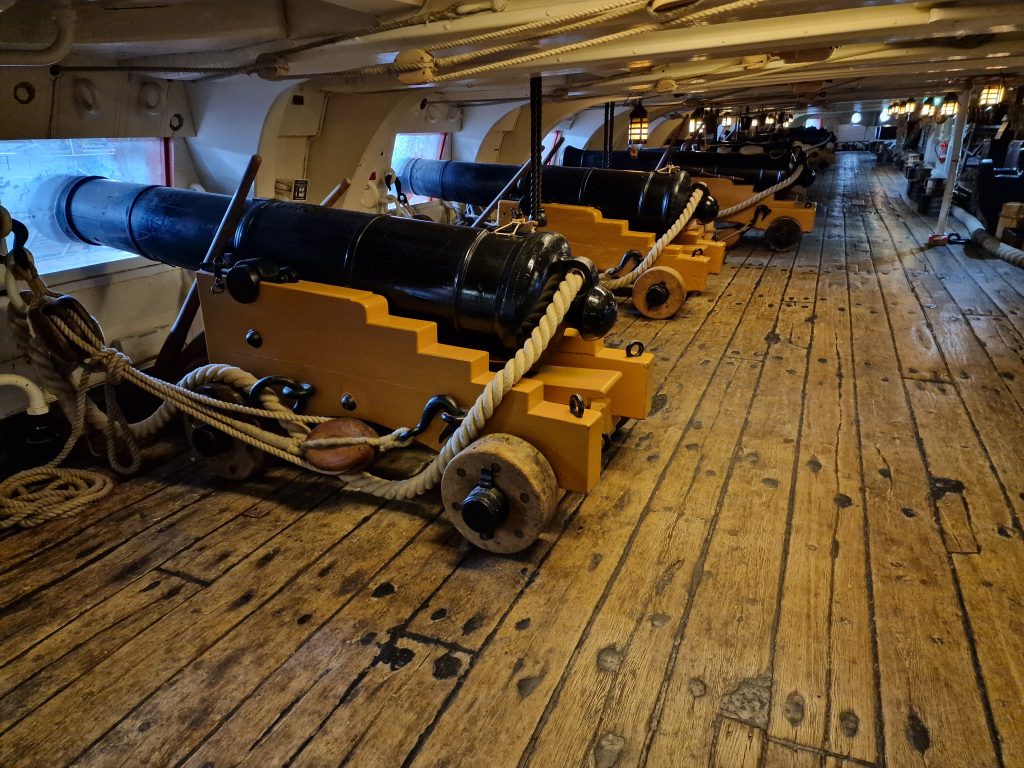
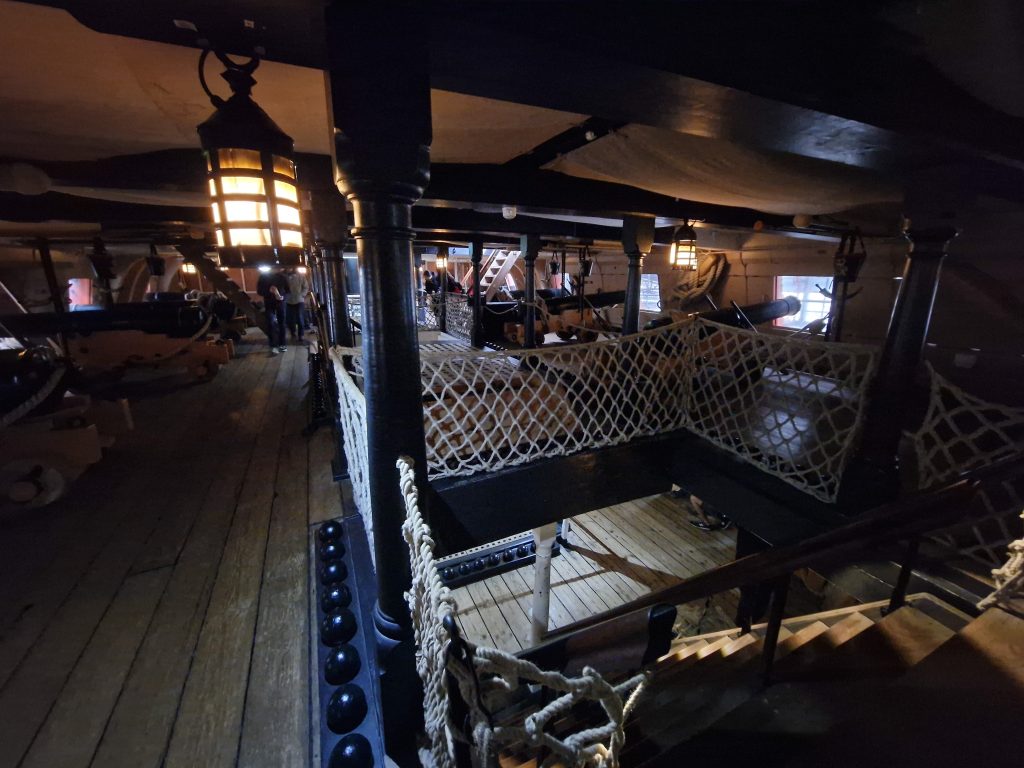
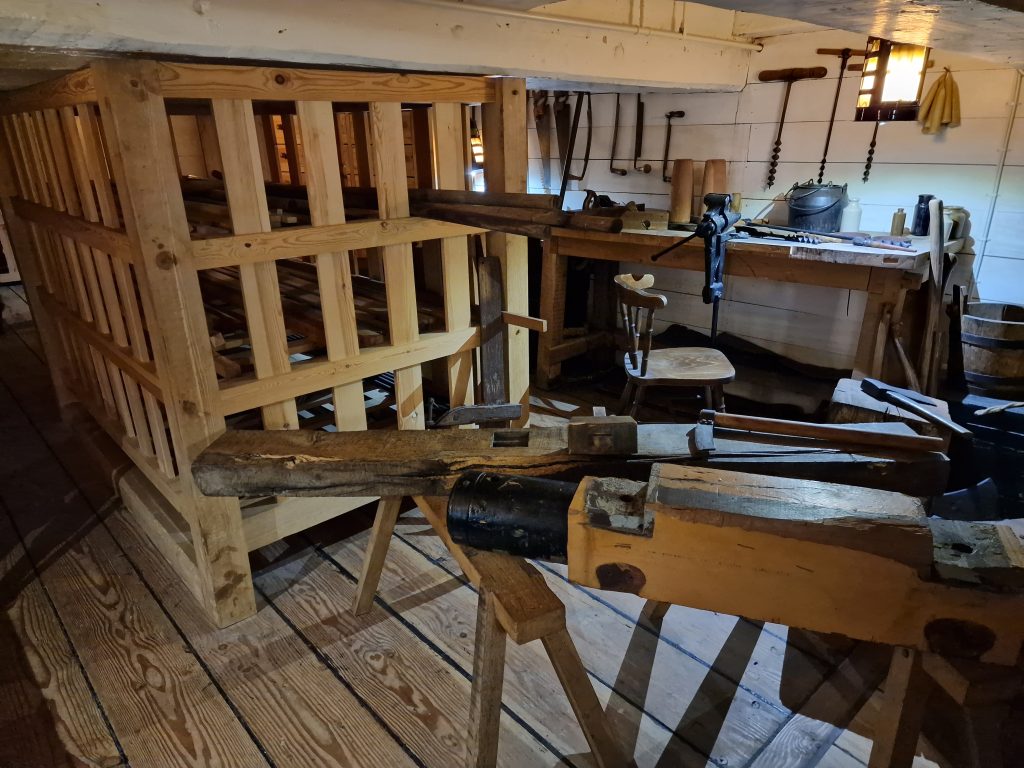
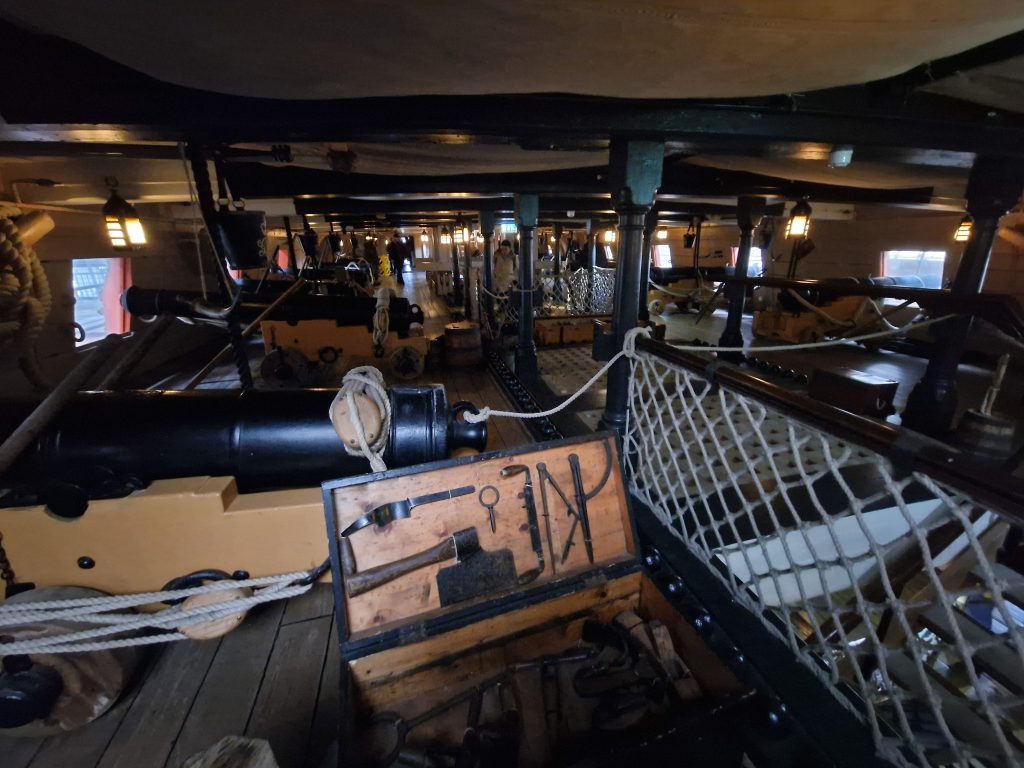
Still hungry for more boats, my next stop was the Mary Rose. This is one Helen also stayed away from because of the climate and pressure-controlled auditorium. We know from visiting the The SS Great Britain that pressurized environments give her migraines, so she stayed in the cafe while I explored further.
What remained of the Mary Rose was less than half a ship; the part that landed at the bottom of the sea and was covered by mud to preserve it. The rest of it rotted away in the four hundred years it remained undiscovered down there.

I always knew the ship was lost in a battle against the French, but I never knew how she sank. It was actually an accidental sinking, after firing many of her cannon towards the oncoming French fleet, she turned sharply, and capsized, overburdened, sinking nearly immediately.
Of the four hundred or so crew aboard at the time, only thirty-five survived the sinking.

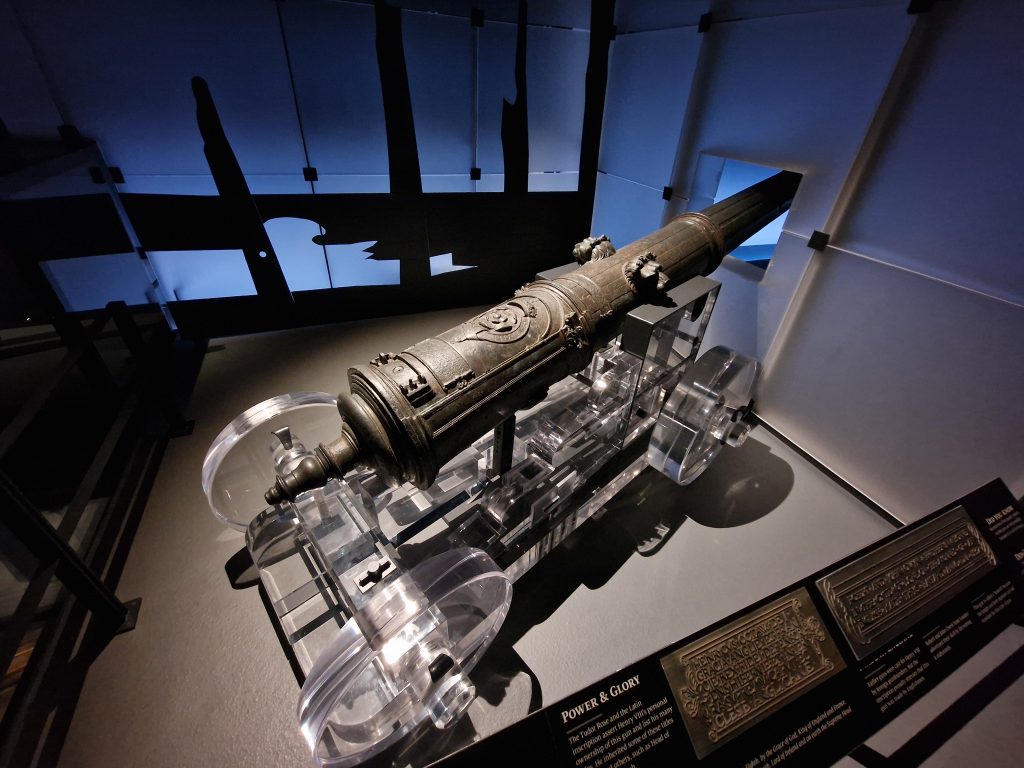
Back towards the car, the torrential rain had abated, and now it was only raining lightly. I thought about visiting the HMS Warrior as well, Britain’s first ironclad vessel from the mid-19th century, but we were both very wet and tired, so returned to the car instead (I think the best view of this ship was from the ferry anyway).
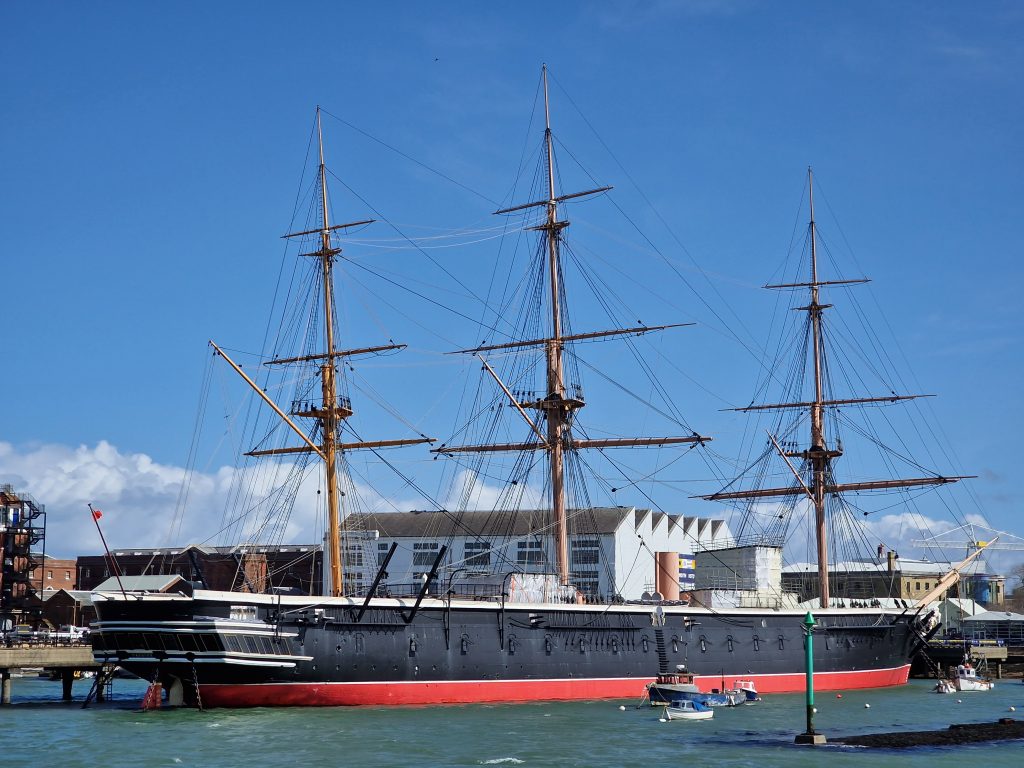
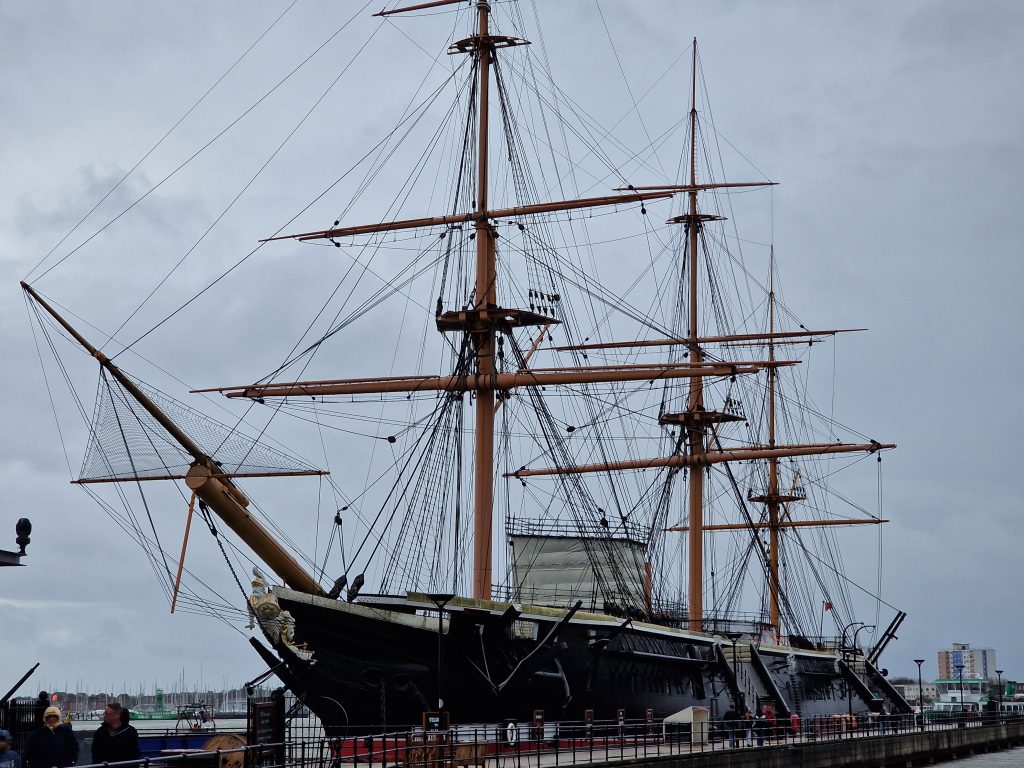
Since we were fairly close-by, we decided to visit my first home in Hayling Island. I don’t remember it, I was only there for a year before we moved up North, but we decided to stop by and take some photos for Mum and Dad for nostalgia’s sake.
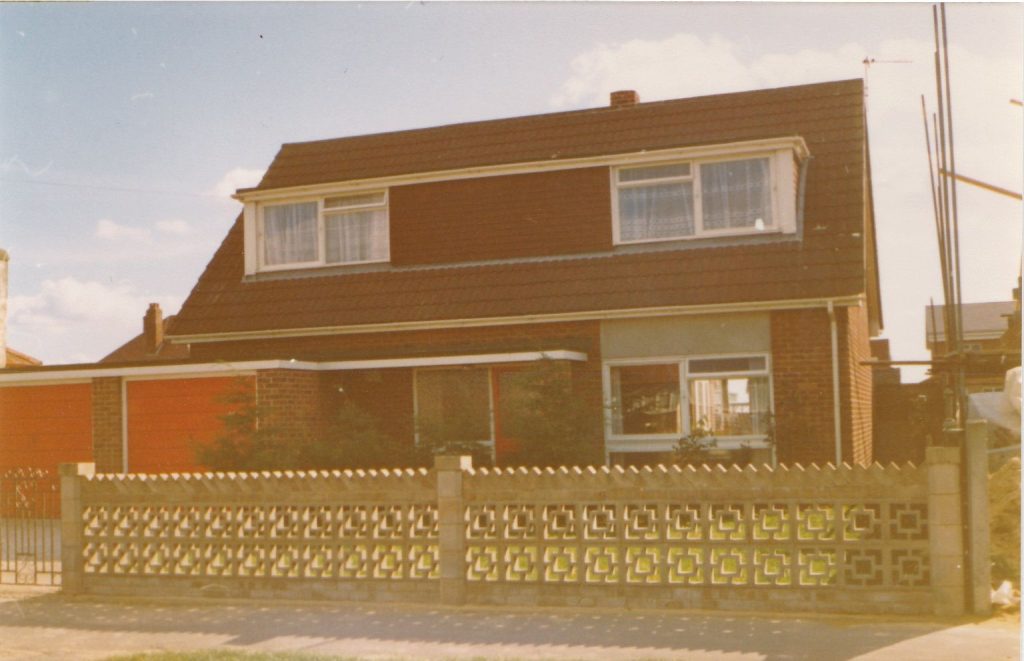
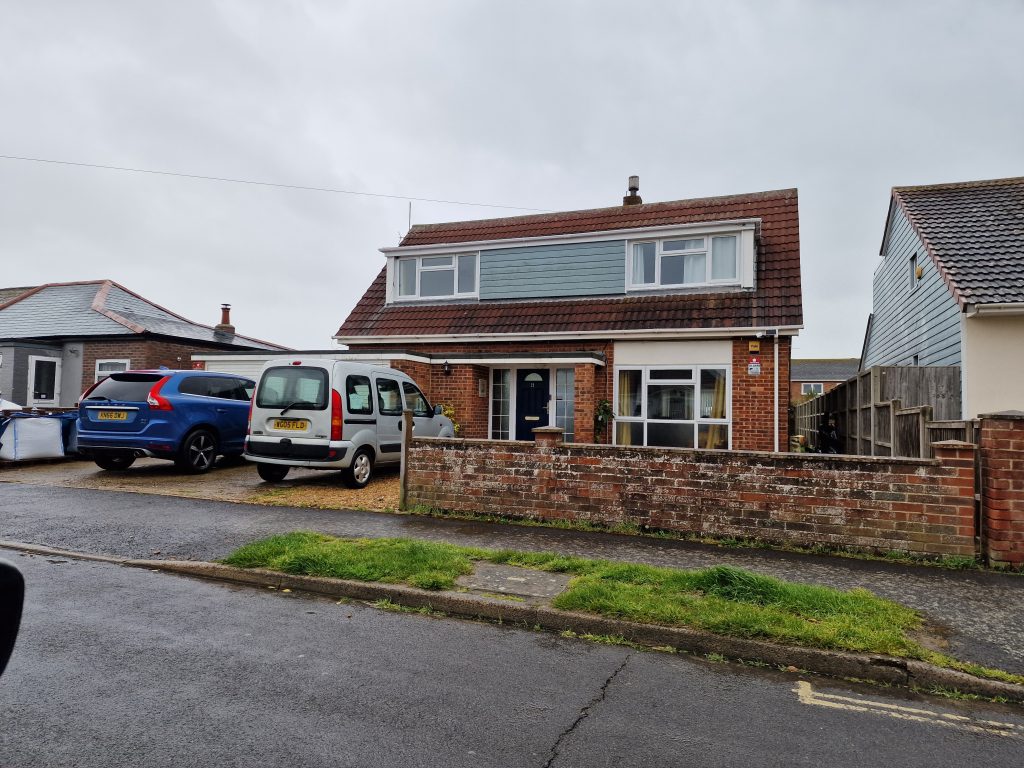
They’ve got rid of the fancy wall.
Mum
We drove down the seafront, then stopped in at the Inn on the Beach for a quick drink. By this time it was torrentially raining again, and very windy. The waves were crashing high against the sea walls.
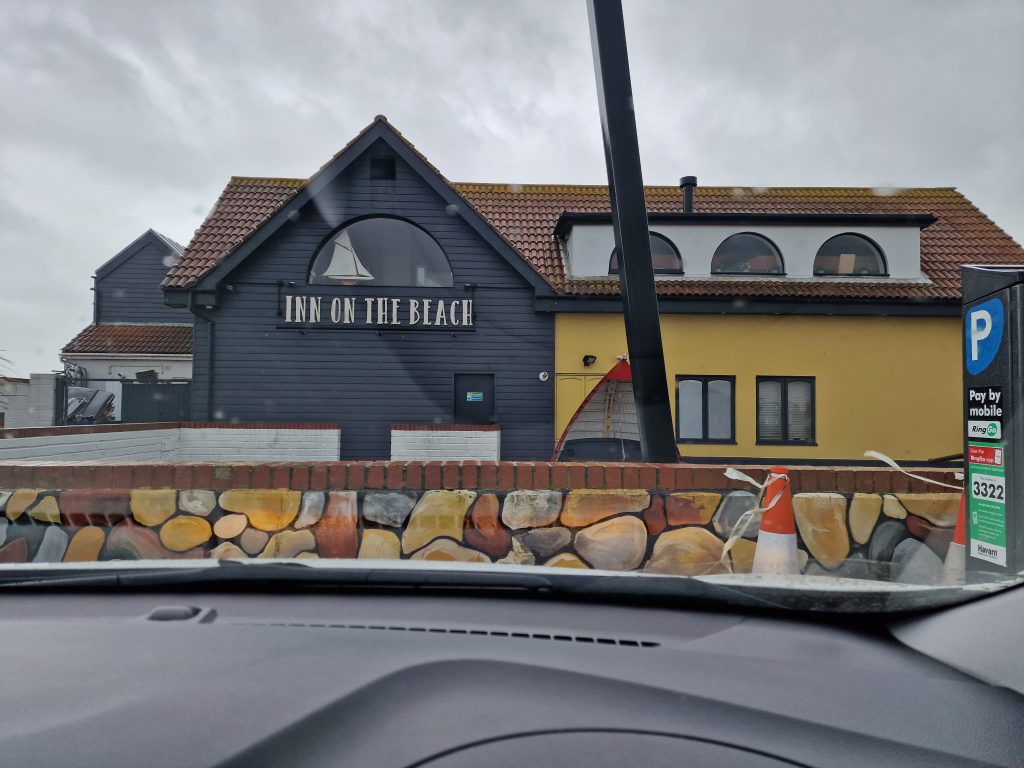
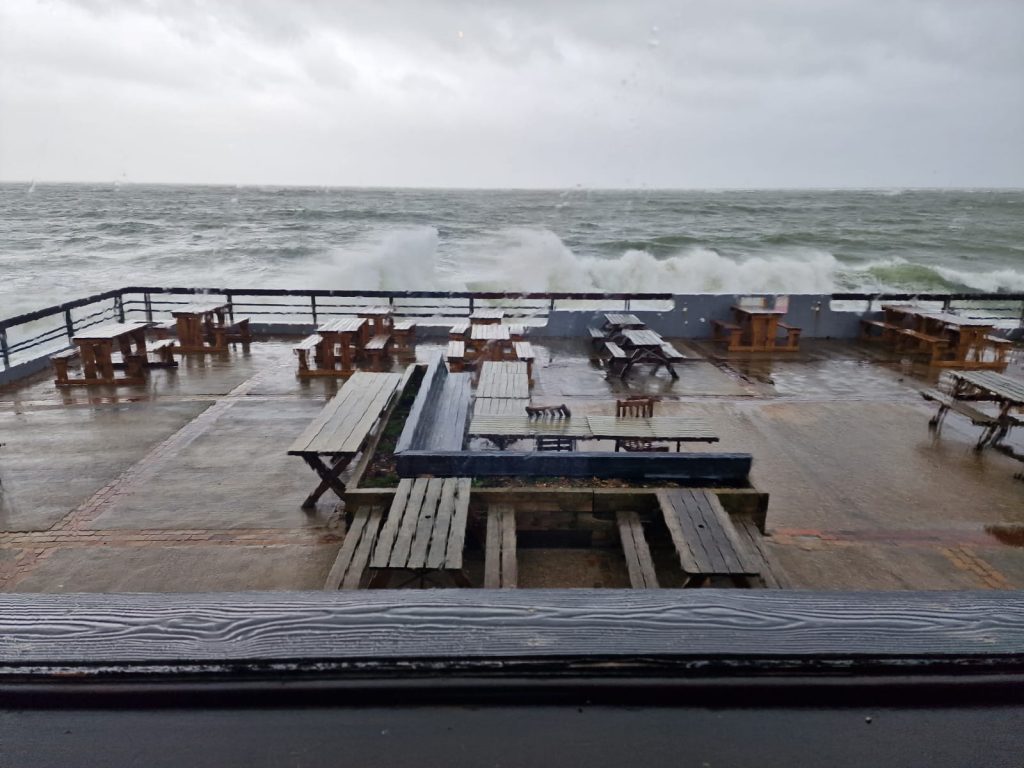
We were there on the opening day hoping for a free beer!
Dad
After Hayling Island, we started heading back towards the hotel, looking for a country pub somewhere to stop off for some dinner on the way. I saw a pub called The Fox And Hounds on the map, so we tried to go there, but they weren’t serving food, so we eventually found a pub called The Chairmakers and settled down for some pub grub.
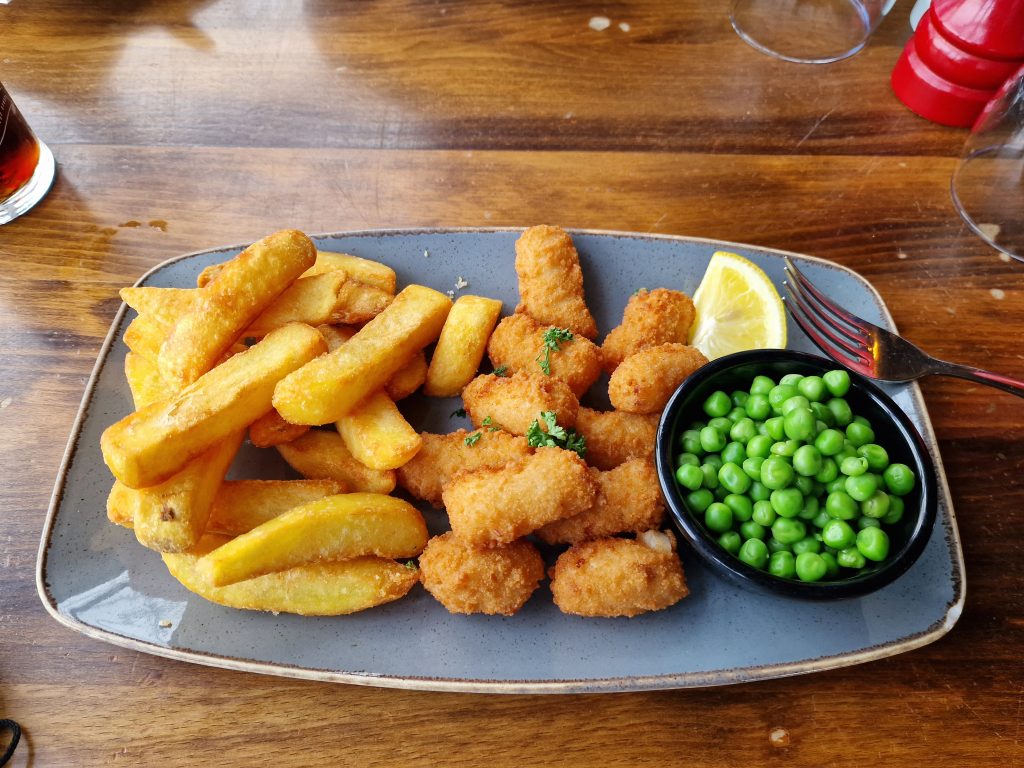

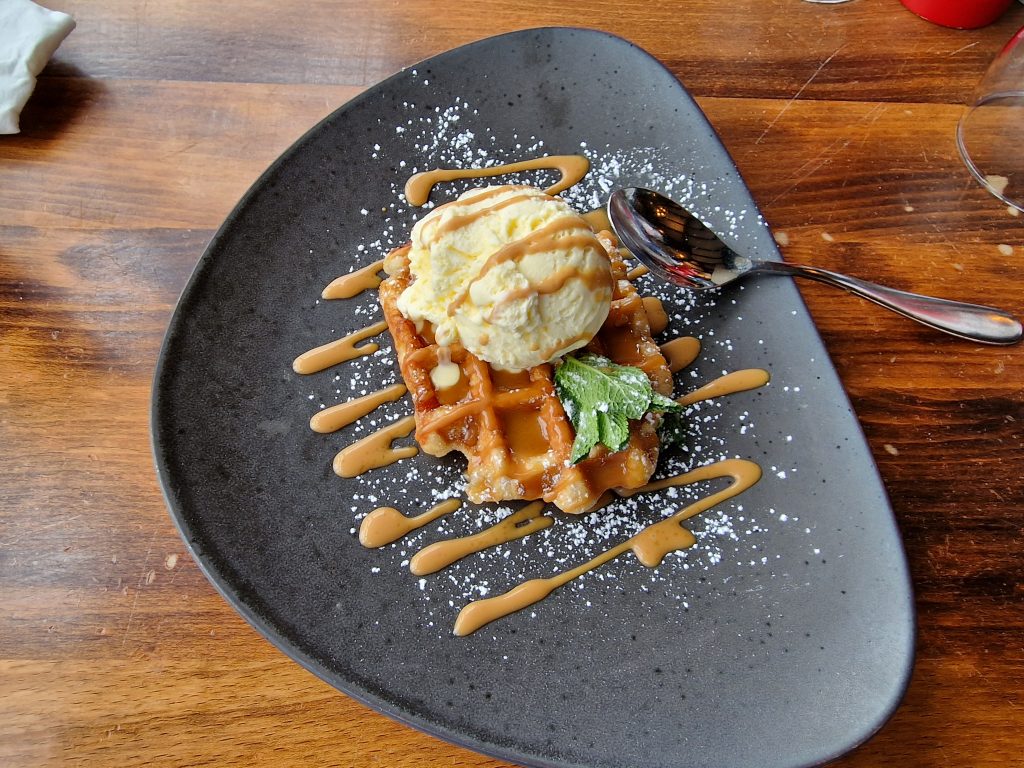
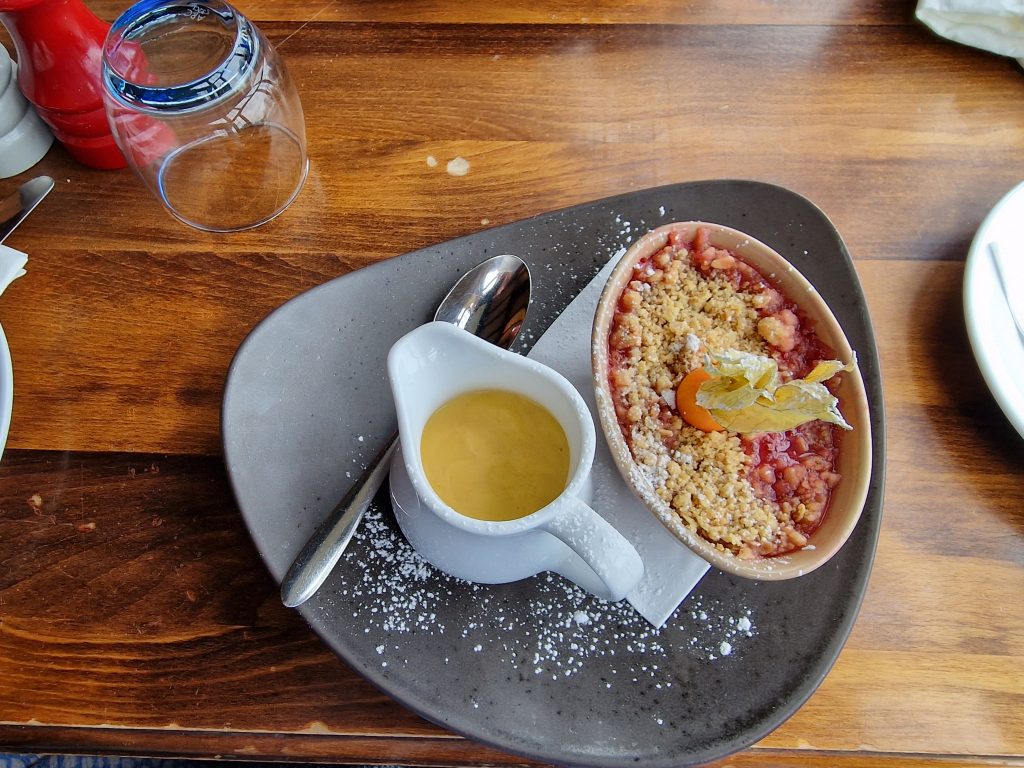
I had scampi and chips followed by a waffle, Helen had sausage and mash followed by rhubarb crumble. Then finally back to the hotel for the night.

Really fancy visiting the submarine, also the Gosport Ferry-never done that.
Shame it was so wet for your visit to Hayling, seaside towns are never at their best in the rain.
I’d definitely recommend Gosport ferry. Even though it was super-windy, the ferry was very smooth, and only took about five minutes to cross the harbour. The walk along the promenade to the submarine museum was picturesque and quiet too, just a shame about the wind.
There’s also a smaller boat that goes between the submarine museum and the historic dockyard, but it wasn’t running because of the bad weather.
Next time you’re in Portsmouth, definitely check out the submarine. Book the day before for a discount too!
Your great grandfather worked at the naval dockyard as a quantity surveyor between 1910 and 1930ish.
Mum and I moved into that house when I was 27 and were there until 1986 when we all became northerners!
Shame about your weather.